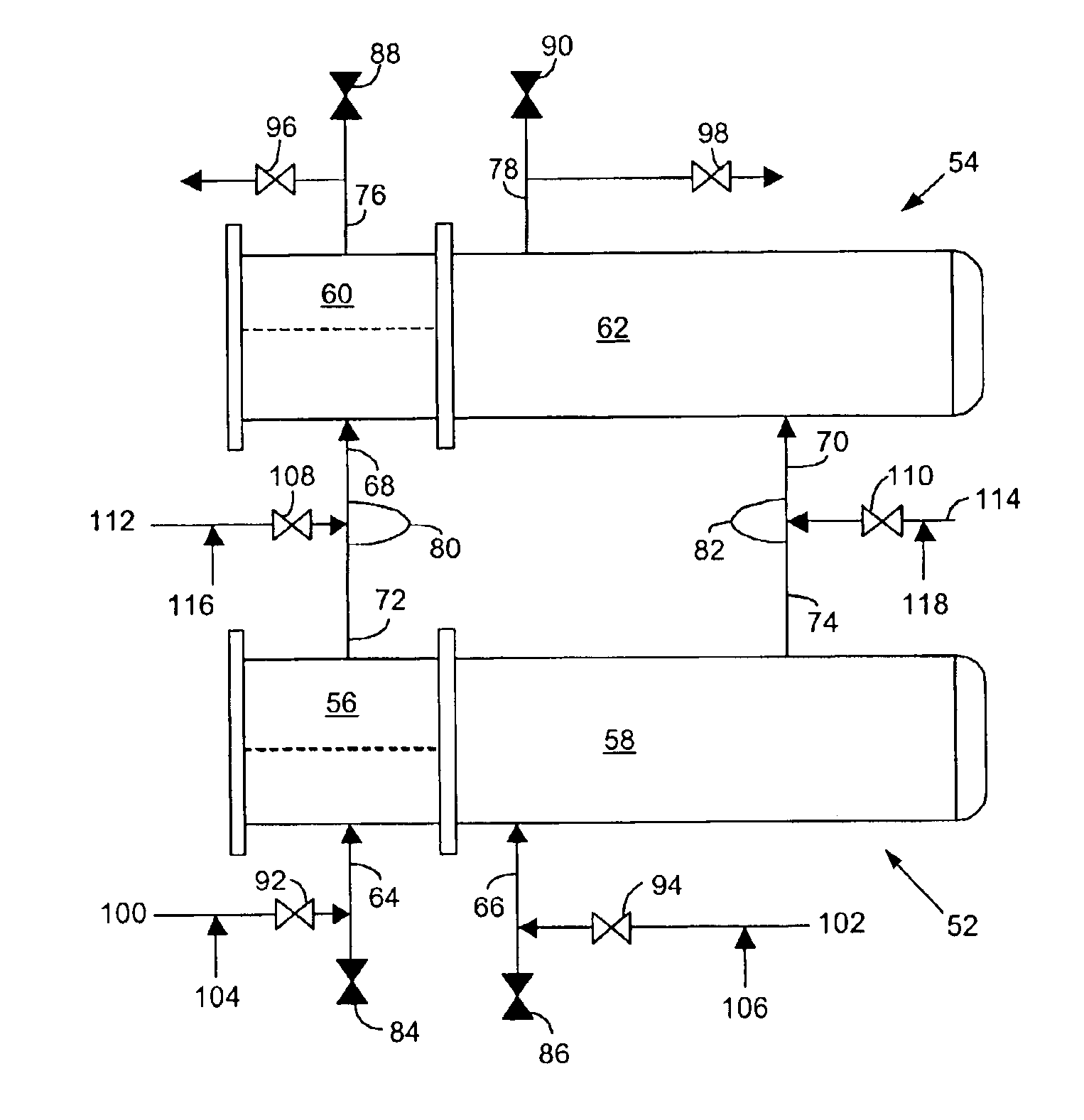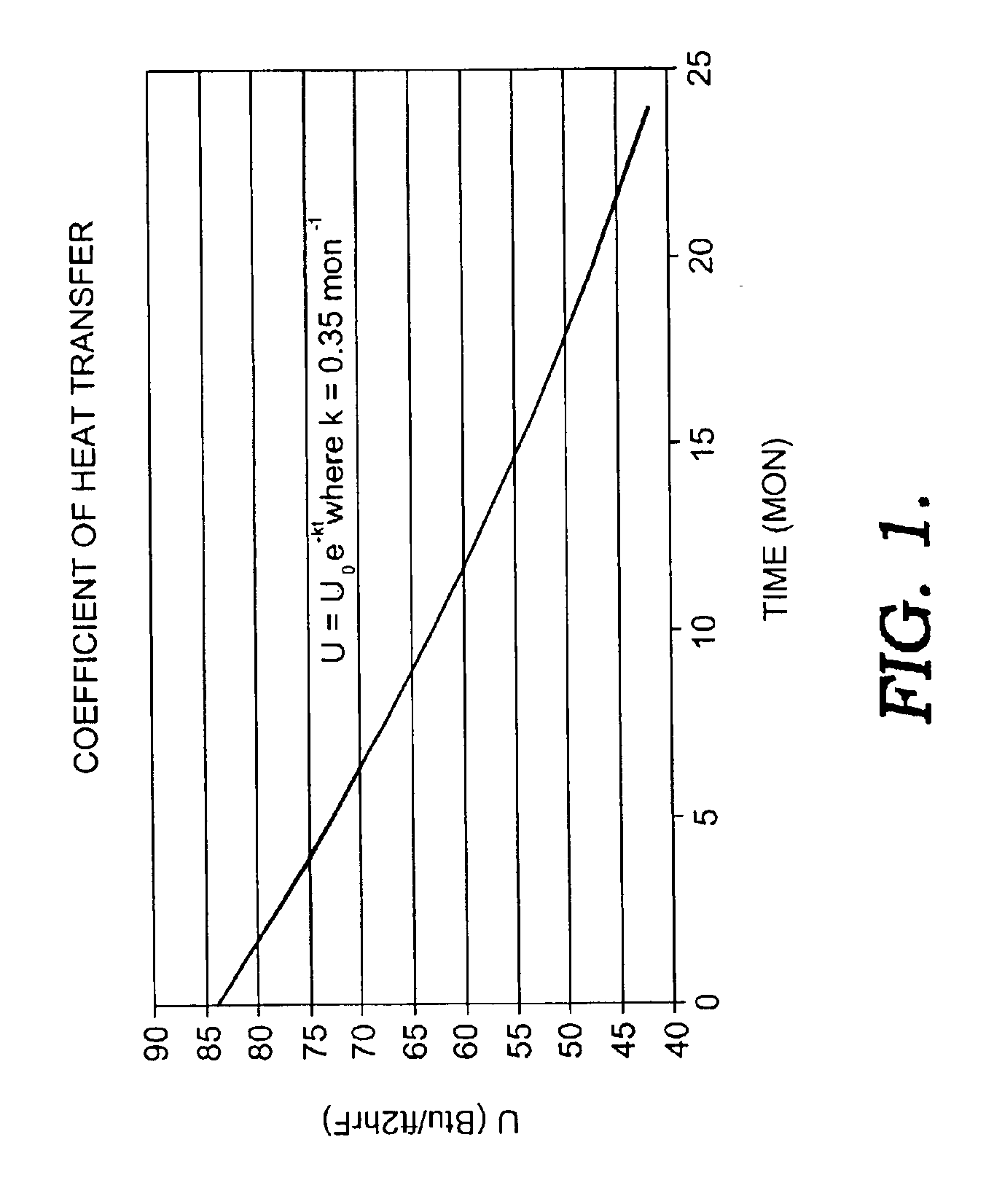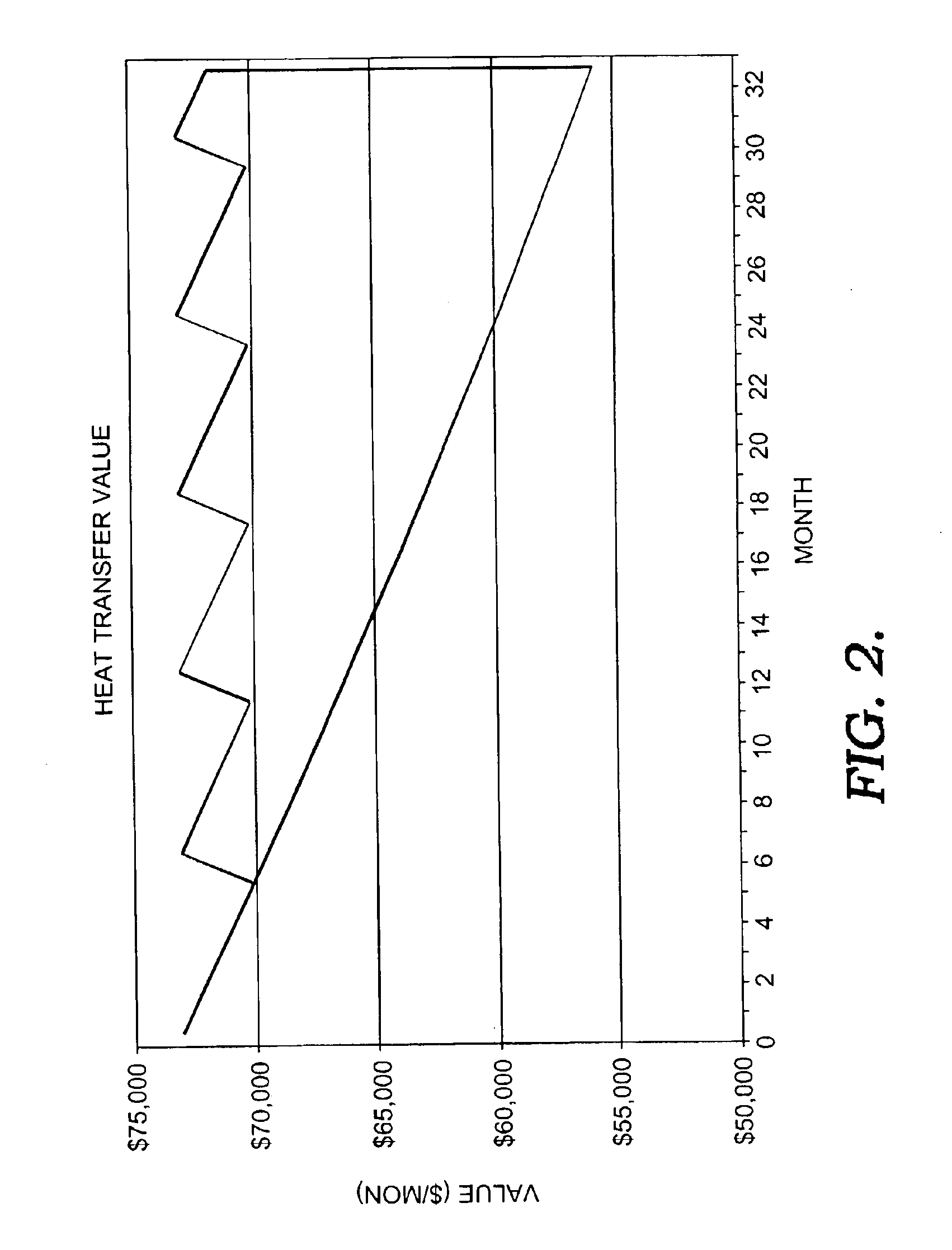Heat exchanger cleaning process
a technology of heat exchanger and cleaning process, which is applied in the direction of flush cleaning, lighting and heating apparatus, cleaning using liquids, etc., can solve the problems of affecting the efficiency of heat exchange equipment, and no realistic alternative was available for cleaning heat exchange equipment without stopping the process, etc., to achieve accurate control of the volumetric ratio of chemical vapor and steam
- Summary
- Abstract
- Description
- Claims
- Application Information
AI Technical Summary
Problems solved by technology
Method used
Image
Examples
Embodiment Construction
[0020]The present invention solves the problems present in the prior art methods.
[0021]First, by enabling the exchangers to be cleaned more regularly, the resulting unfouled exchangers operate more efficiently, with less heat input. Thus, operating expense is reduced. FIG. 2 shows how operating expense is reduced when a regular maintenance program using the disclosed process is established—the area below a curve computed using a regular cleaning regimen and above the curve without a cleaning regimen. A basic net present value calculation can be used to determine a most optimal cleaning cycle. A curve that identifies a 6 month period as the optimal cleaning interval when comparing cost to clean versus loss in efficiency is shown in FIG. 4. This interval is much shorter than before possible with the prior art methods in which delays of 24 months are typical.
[0022]Regular cleaning is possible because the present invention enables the exchangers to be cleaned much more quickly than with...
PUM
| Property | Measurement | Unit |
|---|---|---|
| temperatures | aaaaa | aaaaa |
| temperatures | aaaaa | aaaaa |
| temperatures | aaaaa | aaaaa |
Abstract
Description
Claims
Application Information
 Login to View More
Login to View More - R&D
- Intellectual Property
- Life Sciences
- Materials
- Tech Scout
- Unparalleled Data Quality
- Higher Quality Content
- 60% Fewer Hallucinations
Browse by: Latest US Patents, China's latest patents, Technical Efficacy Thesaurus, Application Domain, Technology Topic, Popular Technical Reports.
© 2025 PatSnap. All rights reserved.Legal|Privacy policy|Modern Slavery Act Transparency Statement|Sitemap|About US| Contact US: help@patsnap.com



